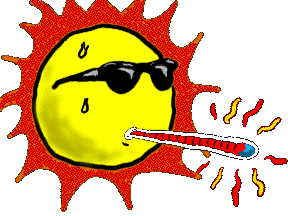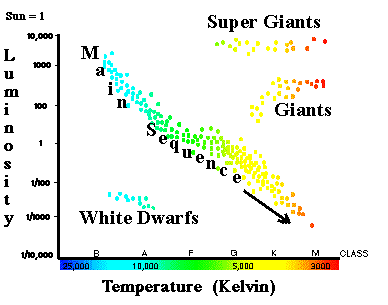


The diagram below shows an example of an Hertzsprung-Russell (H-R) diagram. The first such diagram was plotted by Ejnar Hertzsprung in 1911, and (independently) by Henry Norris Russell in1913. This diagram came to be known as the Hertzsprung Russell diagram, or simply the HR diagram. The horizontal scale shows the temperature of the stars. It is by convention reversed so that the hottest stars are located near the origin, and the coolest stars are to the right.
It is a "two-dimensional" plot for the observed stars, and represents one of the greatest observational syntheses in astronomy and astrophysics! Measuring the stars luminosity was more difficult. Some stars are closer to the earth, while others are extremely distant. Because light becomes more spread out as it moves away from its source, more distant stars would look dimmer, even if they were very bright up close. It was decided to standardize the brightness of each star so that it appeared to be located at a distance of 10 parsecs from the earth, or about 32.6 light years away. The brighntess of the sun would be set at "1", and other stars would be ranked accordingly.
The important things to note about such a diagram is that:

The various boxes on the diagram illustrate the general areas that
are
studied here in order to gain a greater understanding of how star
temperature
is measured.
 |
 |
 |
 |
 |
 |
| Mail comments, questions or suggestions to: outreach@ssl.berkeley.edu | |
| OR Web Curators |

